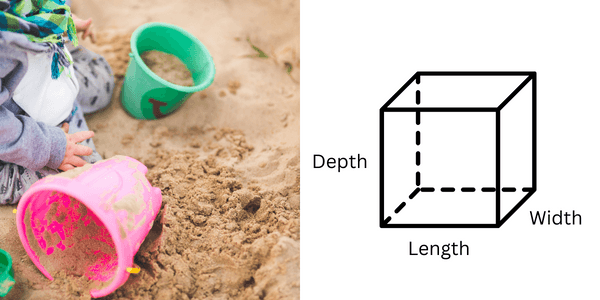Table of Contents:
Frequently Asked Questions
Play sand is a less coarse, much finer sand that has been through certain processes to make sure that it is safe for children to play with.
Play sand goes through a cleaning and sifting process before use. Regular sand has no regulations and does not go through a preparation process. Play sand is specifically made for children and is better sand.
As the name suggests this is sand that is used to play with, it is generally used by young people wanting to build things such as sandcastles. Play sand will have gone through a number of different processes that aim to cleanse the granules and ensure unwanted debris has been taken away. Water pressure systems will then be used to get rid of any harmful bacteria, after this the sharp edges granules will be smoothed out and will be a lot smaller than before. The result of this is a soft product that will seamlessly glide through your hands.
Kinetic sand is regular sand that’s been coated in silicone oil instead of water. It is soft and crumbly, but it also holds its shape when squeezed or pressed.
Generally speaking, replacing sand every year or two should be enough, but you may need to change it more frequently depending on how often the sand is used.
You can try any of the below tried and tested home remedies.
- Sprinkle cinnamon into the sand and mix it very well. If you repeat this on a regular basis this will prevent most bugs from getting into the sand.
- Spray a small amount of white distilled or apple cider vinegar in and around the sandbox and let it dry.
- Sprinkle corn-starch around the edge of the sandbox this will create a perimeter that bugs cannot cross.
Play sand is the finest sand you will find.
If sand gets wet it can harbour bacteria, make sure you let it dry out completely before covering it.
Stir the sand every 30 minutes. It can take up to several hours to dry, depending on how wet the sand is and how hot the day is.
Ensure your sandpit lid or cover is watertight, fits securely to the sandpit of the ground using cable ties.
Sandboxes need to be covered when not in use because it keeps the sand dry and safe so that your children won't get infected with harmful bacteria. It will also help to keep creepy crawlies away.
Before you fill the space with play sand, put a tarp on the bottom. Avoid plastic tarps that will prevent drainage. A good landscaping weed mat or a shade cloth will do the trick of blocking weeds and bugs and keeping your sand where you want it.
Unfortunately, play sand is not suitable to use for plants owing to potential high saline content and its effect on drainage in the soil.
Tips to ensure your sand lasts longer
- Always cover after use to avoid unwanted insects making their way inside and also to stop household animals using it as a litter tray
- Before you cover the sand, make sure that it is thoroughly dry as it can harbour bacteria when wet
- Before use, rake the sand to ensure no foreign objects are present.
- Ensure you wash sand box toys regularly
- Sanitise the play sand regularly
- Do not allow any food or drinks near the sand.
- Put the sand through a colander and place the colander over a bucket allowing the sand to filter through, you can then get rid of any debris the colander filters out
- Do not allow household pets to play in the sand.
How much play sand do I need?
If you are measuring the height of your sand in inches, divide that number by 12 to get your height in feet.
For example, 6” is equivalent to 0.5'. So, if you want 6 inches of sand in your 5' x 5' x 8” sandbox, you'll multiply 5' x 5' x 0.5' to find how many cubic feet of sand you need.

Sand Calculator
How much sand do I need?
Enter the length and width of your sandbox, and the depth of sand to find the volume in cubic feet, and how many 25kg bags you'll need.
| Length (in feet): | |
| Width (in feet): | |
| Height (in inches): |

